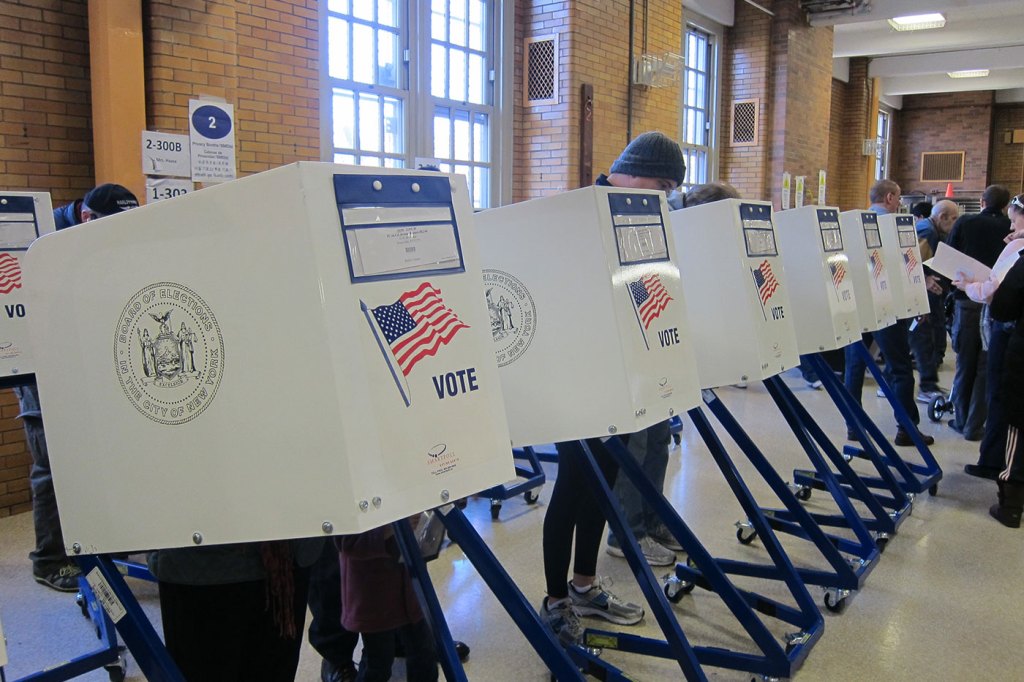Could real-time projections be a game-changer for Election Day coverage?

In December, Wall Street Journal reporter Gerald Seib offered this cautionary advice: “Forget just about everything you thought you knew about presidential elections, because this one is different.” Now, nine months later, you can forget just about everything you thought you knew about Election Day coverage, too.
On Nov. 8, a group of “data scientists, journalists and Silicon Valley entrepreneurs,” as The New York Times calls them, will buck a decades-old tradition by releasing real-time Election Day projections. Their effort dismisses a long practice by news outlets to refrain from releasing exit poll results in battleground states before the polls there have closed.
The company behind the effort, VoteCastr, will measure voter-turnout information in key battleground states, in both the presidential and Senate races, and will publish the data on the online newsmagazine Slate.
Critics worry about the accuracy of the data and the adverse effects it could have on voter turnout. Renowned statistician Nate Silver, a presidential-election prognosticator himself, seemed skeptical, tweeting “Trying to forecast results based on election day turnout patterns could go disastrously wrong.” And, “Super smart team behind this votecastr project. But this is a challenging task. Assumption-driven. And no time to refine/debug the method.”
But Julia Turner, Slate’s editor-in-chief, called the traditional approach “ill conceived and anti-journalistic.” In an interview with Poynter she said, “Publishing our data will help level the playing field, so that voters know as much as campaigns do.”
To gain insight into this new twist to Election Day coverage, we spoke with Jonathan Kaufman, director of the School of Journalism at Northeastern and a Pulitzer Prize-winning reporter and editor who covered the 2008 presidential campaign.
Do you agree with Turner’s assessment that the traditional approach is “ill conceived and anti-journalistic,” or do you think there is merit to the media’s time-honored practice?
Refusing to release exit polls before the polls close has been the correct decision—both because they are sometimes wrong and because worries persist that they could affect the outcome by spurring or driving down turnout. Some studies have shown that publishing exit polls and early results before polls close doesn’t affect voter turnout, but most media organizations still worry about the risk and they don’t want to be criticized if elections are very close.
In this age of digital journalism—driven by a desire to be fast and be first—was a move to real-time projections simply inevitable?
We live in a world that is demanding more and more transparency and is infatuated with data. So this was probably inevitable. But people should remember that this election year has shown us over and over again how “experts” and “predictions”—even the vaunted Nate Silver and FiveThirtyEight—have been wrong.
VoteCastr, “seeing its role as part informer, part disrupter and part pioneer in the world of election reporting, believes it will change the Election Day experience forever,” according to The New York Times. Is this the dawn of a new reality in political coverage, or merely an ill-conceived flash in the pan?
The internet is dotted with the corpses of companies that were sure they were going to change the world. Remember MySpace? Netscape? Blackberry? This new effort may give journalists and readers and viewers another tool to see how the voting is going. I think we need to see how this new method works, how much attention it gets, and what the impact is.
What impact could these real-time projections have on voters and the campaigns? And could they ultimately influence the election outcome?
This may make the “ground game,” with the Trump and Clinton campaigns getting their supporters to the polls, even more important. You can imagine that if projections show tight races in swing states both campaigns will be working the phones and going door to door canvassing to get their supporters out. You can imagine a lot of campaign workers pleading with voters, “Don’t believe what they are saying on Facebook and the internet.”
VoteCastr will be using what it calls “turnout models” focused on key counties in swing states. Is there any danger that the real-time projections could be incomplete or flatly incorrect? And does traditional reporting, which relies on exit polls, run that same risk?
Going back to that famous Chicago Tribune headline in 1948 that declared “Dewey Defeats Truman,” forecasters have always declared that their models can accurately predict election outcomes. They are always wrong. Just a few months ago Nate Silver and most everyone else predicted that Clinton would win the Michigan primary. Instead Sanders did. And no one, of course, saw the rise of Trump.
This new method may help journalists predict things better, but people are unpredictable and so are some elections.





